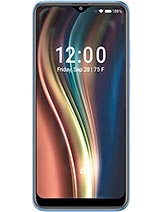iPhone 12 Pro on EE UK 5G Speed Test By Brian Su
Hello today I'm going to talk about using 5g in the UK and what sort of speeds we can get from EE using apple's new iPhone 12 Pro, so before we get any further. Let's take a quick look at the spectrum that we can use in the UK at the moment. So, according to this website 5g. UK, we can see that all four telcos already won the 3.4 gigahertz spectrum back in 2018. Therefore, we know that all the 5g networks that are deployed at the moment will support 3.4 gigahertz and the other frequency bands are being deployed at the moment, but that's for future. So with that in mind, let's have a quick look at what 5g frequency bands we need in order to take advantage of 3.4 gigahertz. So if we switch to this Wikipedia page, we can see that Benz, n77 and n78 cover the 3.4 gigahertz frequency range because it falls within the range here. So now that we know we need n7 and n78, we can go ahead and shop for devices as long as they support either n77 or n78.
We know that they're going to work with UK 5g networks, so let's take a quick look at apple's new 5g devices, for example. So, as you probably already know, all iPhone 12s sold in four different models to cover the four regions around the world, so the first uh the first model called a2341, for example, for the iPhone 12 Pro is suitable for the United States. As we can see here and as we can also see, this model supports millimeter wave 5g. However, the other models for the rest of the world support what we call sub six gigahertz 5g. So as we can see, for example, this second model here suitable for these countries.
They support all these 5g frequency bands, and they're all sub-66 gigahertz, and the third model that we have here is what we know as the international model, so for the 12 produce would be a2407. So this international model works in pretty much the rest of the world, and we can already see that it does cover the bands that we need, which are n77 and 78. Now, I'm just going to quickly scroll down to see what the next model is. So this is the fourth model which is only suitable for china, Hong Kong and Macau, and again they've got a different combination of 5g bands that are supported. So with that in mind, let's have a quick look at what sort of coverage we can get from EE no wee pride themselves as being the fastest network in the UK, with the best coverage for 4g, LTE and 5g, but as you can see at the moment, as things stand, the coverage is still quite patchy.
Across the UK I mean, if we scroll down here, we can see that London is pretty much covered. However, as soon as we move away, it's pretty patchy. The major cities are starting to receive coverage from EE. However, that's going to take a bit of time, but anyway, without further ado, so I just want to point out that this is my test location for the 5g uh speed test, so I had actually had to drive to this area last night, and it was close to 10 pm on Sunday now. This area here is called, pin green industrial estate, so I would safely assume that there was no one else using 5g in this area last night being an industrial estate, so um I pretty much got most of the bandwidth to myself probably, and we can also see that the signal here is supposed to be quite strong.
However, when I was when I was there, I was actually able to get full five bars of signal. So let's have a quick look at what speeds I managed to get last night. So the first thing I did just to get a base reference was to disable 5g and run speed tests on the 4g LTE. So these are the speeds that I was able to get, so megabits per second download and 104 megabits per second upload. So let's have a look at what speeds I was able to get with 5g.
So now, as you can see, I've switched 5g on, and I'm getting close to uh 520 megabits per second now, obviously, that's not a sustained peak, which is why speed test kind of downgraded that to 517 megabits per second. But if we look at the results that we got so 570 megabits per second download and 89.5 megabits per second upload now, I hope this brief video has been helpful. Please feel free to leave me any questions in the comments section, and thanks once again for watching.
Source : Brian Su

























